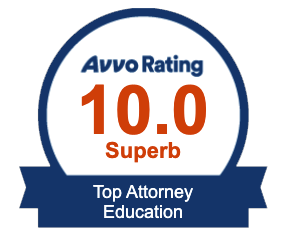When an IEP team discusses methodology, parents should pay close attention. Why? Because methodology is the manner in which a student with disabilities is taught. Special education means specially designed instruction at no cost to the parent, to meet the unique needs of a child with a disability 20 U.S.C. 1401(29). “Specially designed instruction means adapting, as appropriate to the needs of an eligible child … the content methodology, or delivery of instruction to address the unique needs of this child that result from that child’s disability and to ensure access of the child to the general curriculum so that he or she can meet the educational standards … that apply to all children.” 34 C.F.R. 300.39(b)(3). IEP must include a statement of special education, related services and supplementary aides and services, based on peer-reviewed research to the extent practicable (20 USC Sec. 1414 (d)(1)(A)(i)(IV)). This essentially requires the IEP team to place methodology on the agenda when developing an IEP for a child with a disability.
So why should a parent be concerned with what methodology an IEP determines is appropriate for a child with a disability? It is important because the type or nature of methodology or specialized instruction that the IEP team chooses for your child may determine whether the child is receiving a free appropriate public education. For example, a child with dyslexia requires specialized instruction to make educational progress and receive a free appropriate public education. This premise is basically undisputed. What specialized instruction or methodology the child with dyslexia receives is critical. Peer review research shows that there are several educational instructional programs such as Orton-Gillingham, Wilson Reading Program, and Lindamood Bell, that are effective in addressing the unique needs of a child with dyslexia. Peer review research shows a child with dyslexia requires a multi-sensory approach. There is no monolithic approaches to providing specialized instruction to a child with dyslexia. In other words, one size does not fit all. Some children with dyslexia may benefit from the instruction by using the Orton-Gillingham program, but not all children with dyslexia. A parents should research the types of instructional programs that are peer review researched for a child with dyslexia and receive recommendations from educational professionals, advocates and special education attorneys on what may be the appropriate reading program that best meets the unique need of your child. A parent should be question IEP members when a generic reading program is recommended for a child with dyslexia. The parent should ask whether the program is peer reviewed researched for children with dyslexia. If not, then it is probably not appropriate for your child. You also remember that if your child needs specialized instruction for dyslexia then this instruction should take place in a classroom with a limited number (2-5) children. You cannot use Orton-Gillingham for a child with dyslexia in a classroom with 30 other students. This is not to say the IEP team cannot adopt Orton-Gillingham methodology in all his or her classes. The child entire curriculum should focus on the multi-sensory approach. In addition, if the IEP team only provides one hour a day of specialized instruction for a child with dyslexia, it is probably insufficient. Peer review research demonstrates that a child with dyslexia should 2-3 hours a day at least of specialized instruction along with coordinated speech and language therapy.
Another example is providing specialized instruction for a child with autism. In general, some children – but not all children with autism – require special education or a certain methodology for instruction. Applied Behavior Analysis or ABA therapy is one recognized peer review research instruction for some children with autism. It I recommended that these children receive a minimum of 20-235 hours a week of ABA instruction a week in a one-to-one or one-to-two ratio of teacher to student. The LOVASS method recommends at least 40 hours a week in isolated setting. Some parents provide LOVASS instruction for their child with autism in a home environment. Again, one size does not fit all. You should consult with professionals who are knowledgeable about all of the appropriate methodologies before deciding on which one is appropriate for your child. You should have your child properly assessed and evaluated as well by those who are trained, experienced and knowledgeable in this area.
Finally, courts have ruled the chosen methodology by the IEP team is given preference over the parent’s chosen methodology. If, however, the parents can show the IEP’s chosen methodology is inappropriate for their child, then the parent’s methodology is given preference. What is the appropriate methodology for child is an individualized determination. Courts consider a constellation of factors to determine what is an appropriate methodology for a child to receive a free appropriate public education. If you have further questions and comments about methodology, you should contact me or another special education law attorney in your area for guidance on how to handle this issue at an IEP meeting for your child.

